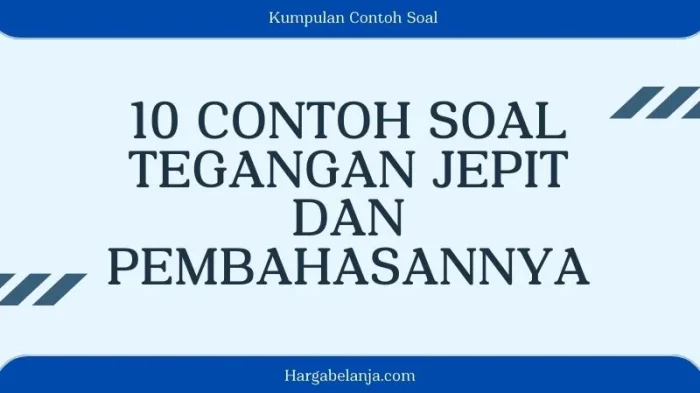Jika ingin menguasai Bahasa Inggris, kamu perlu menguasai tenses. Apa itu tenses bahasa Inggris? Sederhananya, tenses Inggris adalah perubahan kata kerja dalam bahasa Inggris (verb) untuk menyatakan aksi yang dipengaruhi oleh waktu. Bingung? Coba simak artikel ini sampai tuntas.
Menurut EnglishClub, tenses adalah metode berbasis verb yang yang dipakai untuk mengindikasikan waktu (kapan terjadinya sesuatu) dan mengungkapkan status kejadian tersebut (apakah masih berlangsung / sudah selesai?).
Lantas, apa saja jenis tenses? Mari pelajari tenses Bahasa Inggris lengkap dengan contoh kalimat positif, negatif dan tanya melalui pembahasan berikut ini.
Tenses Bahasa Inggris: Present (Contoh Kalimat Positif, Negatif, dan Tanya)

Simple Present Tense
Simple Present Tense biasanya digunakan untuk menyatakan rutinitas, kebiasaan, dan fakta (kebenaran umum). Simple Present Tense juga dapat menyatakan suatu kejadian atau kebiasaan yang terjadi di masa sekarang.
Biasanya tenses ini dilengkapi adverb of time (keterangan waktu) seperti every day, every week, today. this week, dan tonight. Selain itu, terdapat pula adverb of frequency (keterangan frekuensi) seperti always, generally, often, usually, seldom, dan sometimes.
Rumus Simple Present Tense:
Subject + Verb 1 (untuk kalimat positif)
Subject + don’t / doesn’t + Verb 1 (untuk kalimat negatif)
Do/Does + Subject + Verb 1? (untuk kalimat tanya)
Contoh kalimat positif:
- I go to school every day.
- They speak English very well.
- She usually reads books every night.
Contoh kalimat negatif:
- I don’t go to school every day.
- They don’t speak English very well.
- She doesn’t usually read books every night.
Contoh kalimat tanya:
- Do I go to school every day?
- Do they speak English very well?
- Does she usually read books every night?
Agar lebih memahami jenis tense ini, kamu bisa mengerjakan soal-soal berikut.
Present Continuous Tense
Present Continuous Tense digunakan untuk menyatakan suatu kejadian yang sedang berlangsung saat kamu berbicara. Biasanya, keterangan waktu yang digunakan adalah now, at this moment, dan at present.
Selain itu, Present Continous Tense juga bisa digunakan untuk menyatakan rencana di masa depan. Untuk hal ini, biasanya keterangan waktu yang dipakai adalah masa depan, seperti next week, next month, next year dan sebagainya.
Rumus Present Continuous Tense:
Subject + To be at present + Verb-ing (untuk kalimat positif)
Subject + To be at present + not + Verb-ing (untuk kalimat negatif)
To be at present + Subject + Verb-ing? (untuk kalimat tanya)
To be at present terdiri dari 3 macam, yakni am, is, dan are. Berikut pasangan subyek dengan to be at present-nya.
I => am
You, They, We => are
She, He => is
Contoh kalimat positif:
- I am working now.
- They are walking toward you.
- She is writing a letter to her friend in the US.
- She is moving to a new school next month (penggunaan present continous tense untuk menceritakan rencana, biasanya ditandai dengan keterangan waktu di masa depan, contoh: next month)
Contoh kalimat negatif:
- I am not working now.
- They are not walking toward you. (are not bisa disingkat menjadi aren’t)
- She is writing a letter to her friend in the US.
Contoh kalimat tanya:
- Am I working now?
- Are they walking toward you?
- Is she writing a letter to her friend in the US?
Beberapa verb (kata kerja) yang tidak digunakan dalam present continuous tense adalah:
- Verbs of sense: hear, see, smell, recognize, notice, dsb.
- Verbs of emotion: forgive, desire, refuse, care, wish, adore, hate, like, dislike, dsb.
- Verbs of thinking: understand, realize, feel, mean, know, believe, expect, suppose, remember, forget, recollect, mind, trust, dsb.
- Verbs of possessing: posses, own, belong, owe, dsb.
- Verbs lainnya: appear, seem, contain, consist, concern, keep, dsb.
Agar lebih memahami jenis tense ini, kamu bisa mengerjakan soal-soal berikut.
Present Perfect Tense
Present Perfect Tense digunakan untuk menyatakan kejadian yang sudah selesai dilakukan dan hasil pekerjaan tersebut bisa dilihat pada saat sekarang. Tenses bahasa Inggris yang satu ini juga bisa menyatakan sesuatu kejadian yang mulai dikerjakan pada masa lampau, tetapi masih berlangsung hingga sekarang.
Biasanya kata keterangan yang sering digunakan adalah: today, since, for, lately, recently, just now, already, so far, … yet, dan sebagainya.
Rumus Present Perfect Tense:
Subject + Have / Has + Verb 3 (untuk kalimat positif)
Subject + Have / Has + Not + Verb 3 (untuk kalimat negatif)
Have / Has + Subject + Verb 3? (untuk kalimat tanya)
Contoh kalimat positif:
- I have eaten just now. (dapat disingkat menjadi I’ve eaten just now)
- They have gone. (dapat disingkat menjadi They’ve gone)
- She has loved you for 30 years.
Contoh kalimat negatif:
- I have not eaten. (have not bisa disingkat menjadi haven’t)
- They haven’t gone.
- She hasn’t loved you for 30 years.
Contoh kalimat tanya:
- Have I eaten?
- Have they gone?
- Has she loved you for 30 years?
Agar lebih memahami jenis tense ini, kamu bisa mengerjakan soal-soal berikut.
Present Perfect Continuous Tense
Present Perfect Continous Tense digunakan untuk menyatakan sesuatu kejadian yang dikerjakan di masa lampau dan sampai sekarang masih berlangsung. Biasanya keterangan waktu yang dipakai adalah since, for, dan sebagainya.
Rumus Present Perfect Continuous Tense
Subject + Have / Has + Been + Verb-ing (untuk kalimat positif)
Subject + Have / Has + Not + Been + Verb-ing (untuk kalimat negatif)
Have / Has + Subject + Been + Verb-ing? (untuk kalimat tanya)
Contoh kalimat positif:
- I have been working there for 20 years.
- They’ve been waiting since 2 hours ago.
- Miss Baki has been looking for her book for 30 minutes.
Contoh kalimat negatif:
- I have not been working there for 20 years. (bisa disingkat menjadi I haven’t been working there for 20 years).
- They haven’t been waiting since 2 hours ago.
- Miss Baki hasn’t been looking for her book for 30 minutes.
Contoh kalimat tanya:
- Have I been working there for 20 years?
- Have they been waiting since 2 hours ago?
- Has Miss Baki been looking for her book for 30 minutes?
Agar lebih memahami tenses bahasa Inggris yang satu ini, kamu bisa mengerjakan soal-soal berikut.
Tenses Bahasa Inggris: Past (Contoh Kalimat Positif, Negatif, dan Tanya)
Simple Past Tense
Simple Past Tense digunakan untuk menyatakan kejadian yang terjadi di masa lalu. Biasanya kata keterangan waktu yang dipakai adalah ago, last …, yesterday, just now.
Seringkali tenses bahasa Inggris ini memakai kata used to. Akan tetapi, kata used to digunakan untuk menyatakan sesuatu kebiasaan di masa lalu yang sekarang tidak lagi dilakukan. Contohnya when I was young, I used to play hide and seek with my friends.
Rumus Simple Past Tense untuk kalimat positif:
Subject + Verb 2
Subject + to be (past)
To be (past) terdiri dari was dan were. Was untuk I, she, he. Were untuk they, we, you.
Rumus Simple Past Tense untuk kalimat negatif:
Subject + did not + Verb 1
Subject + to be (past) + not
Rumus Simple Past Tense untuk kalimat tanya:
Did + Subject + Verb 1
To be (past) + Subject
Contoh kalimat positif:
- I went to England last week.
- I was there a month ago.
- She made the cake with love.
Contoh kalimat negatif:
- I did not go to England last week. (menggunakan go yang merupakan verb 1, karena di depan sudah menggunakan did yang merupakan verb 2)
- I was not there a month ago. (bisa disingkat menjadi i wasn’t there a month ago)
- She did not make the cake with love. (bisa disingkat menjadi she didn’t make the cake with love)
Contoh kalimat tanya:
- Did I go to England last week?
- Were you there a month ago?
- Did she make the cake with love?
Agar lebih memahami tenses bahasa Inggris yang satu ini, kamu bisa mengerjakan soal-soal berikut.
Past Continuous Tense
Past Continuous Tense digunakan untuk menyatakan dua kejadian yang terjadi di waktu lampau, yang mana satu kejadian sedang berlangsung sewaktu kejadian yang lain terjadi. Contohnya: She was watching TV when he phoned her.
Selain itu, Past Continuous Tense juga digunakan untuk menyatakan dua kejadian yang keduanya terjadi secara bersamaan di masa lalu. Contohnya: While my father was cooking in the kitchen, I was playing chess in the living room.
Rumus Past Continuous Tense:
Subject + to be (past) + verb-ing (untuk kalimat positif)
Subject + to be (past) + not + verb-ing (untuk kalimat negatif)
To be (past) + subject + verb-ing? (untuk kalimat tanya)
Contoh kalimat positif:
- She was reading a novel when someone knocked the door.
- They were cooking in the kitchen when the girl came.
- I was sleeping when my mother opened the door.
Contoh kalimat negatif:
- She was not reading a novel when someone knocked the door.
- They were not cooking in the kitchen when the girl came.
- I was not sleeping when my mother opened the door.
Contoh kalimat tanya:
- Was she reading a novel when someone knocked the door?
- Were they cooking in the kitchen when the girl came?
- Was I sleeping when your mother opened the door?
Agar lebih memahami jenis tense ini, kamu bisa mengerjakan soal-soal berikut.
Past Perfect Tense
Past Perfect Tense adalah tenses yang digunakan untuk menyatakan dua kejadian yang terjadi di masa lalu, yang mana satu kejadian sudah selesai dikerjakan, sementara kejadian yang lain masih berlangsung.
Rumus Past Perfect Tense
Subject + had + Verb 3 (untuk kalimat positif)
Subject + Had + Not + Verb 3 (untuk kalimat negatif)
Had + Subject + Verb 3? (untuk kalimat tanya)
Contoh kalimat positif:
- I had just come after he got there.
- She had finished her work when her mother came.
- They had just booked a room when she phoned them.
Contoh kalimat negatif:
- I had not come after he got there. (had not bisa disingkat hadn’t)
- She hadn’t finished her work when her mother came.
- They hadn’t booked a room when she phoned them.
Contoh kalimat tanya:
- Had I just come after he got there?
- Had she finished her work when her mother came?
- Had they booked a room when she phoned them?
Agar lebih memahami jenis tense ini, kamu bisa mengerjakan soal-soal berikut.
Past Perfect Continuous Tense
Past Perfect Continuous Tense merupakan tenses bahasa Inggris yang digunakan untuk menyatakan berapa lama kejadian tersebut berlangsung sebelum kejadian lainnya.
Rumus Past Perfect Continuous Tense:
Subject + had + been + Verb-ing (untuk kalimat positif)
Subject + had + not + been + verb-ing (untuk kalimat negatif)
Had + subject + been + verb-ing? (untuk kalimat tanya)
Contoh kalimat positif:
- They had been playing football for 3 hours when there was a terrible storm.
- He had been living in Yogyakarta for five years when the war broke out.
Contoh kalimat negatif:
- They had not been playing football for 3 hours when there was a terrible storm.
- He had not been living in Yogyakarta for five years when the war broke out.
Contoh kalimat tanya:
- Had they been playing football for 3 hours when there was a terrible storm?
- Had he been living in Yogyakarta for five years when the war broke out?
Agar lebih memahami tenses bahasa Inggris yang satu ini, kamu bisa mengerjakan soal-soal berikut.
Demikian pembahasan mengenai tenses bahasa Inggris. Kamu patut berbahagia karena berhasil mempelajari beberapa tenses. Tapi jangan berpuas diri ya, karena sebenarnya pembahasan mengenai tenses belum selesai sampai disini. Untuk menyimak tenses lainnya, langsung saja meluncur ke artikel ini.



